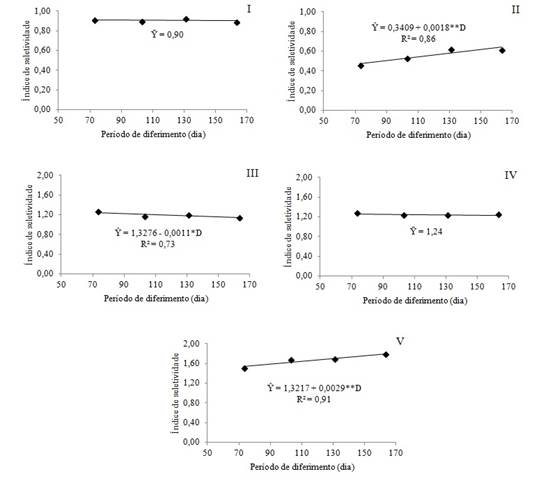ABSTRACT
The experiment was carried out aiming to understand the effect of deferring period on morphology and nutritive value of Brachiaria decumbens cv. Basilisk pasture and on hand-plucking sample with cattle. Subdivided plots were used according to a randomized block design with two replicates. Four deferring periods (73, 103, 131 and 163 days) and two forage samples (available in pasture (AP) and obtained by hand-plucking (HP)) were studied. The live leaf laminae (LLL), potentially digestible dry matter (PDDM) and crude protein (CP) percentages were higher in HP samples, when compared to AP forage. The opposite response pattern occurred for live stem (LS), dead stem (DS) and neutral detergent fiber (NDF) percentages. In general, the longest deferring period resulted in a worse morphological composition and nutritive value of forages. The potential selectivity index (PSI) of LLL, LS and dead leaf lamina (DLL) increased linearly with deferring period. The PSI of DS was highest in grasslands under interim deferring periods. With increase in deferring period, the PSI of the NDF and PDDM remained constant, the PSI of potentially digestible NDF and CP decreased linearly and the PSI of indigestible NDF increased linearly. The PSI allows the understanding of selectivity of morphological components and nutritional entities for cattle grazing. The deferring period reduction improves the sward structure and optimizes the cattle selectivity.
Keywords:
Brachiaria decumbens; morphological composition; nutritive value; sward structure

 Thumbnail
Thumbnail
 Thumbnail
Thumbnail

